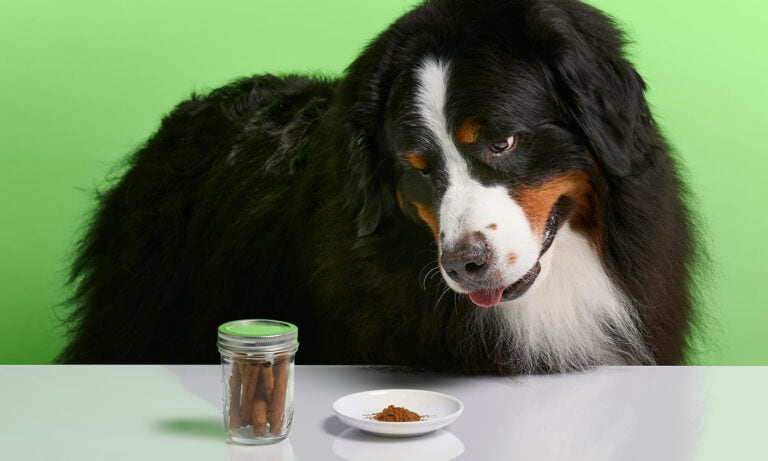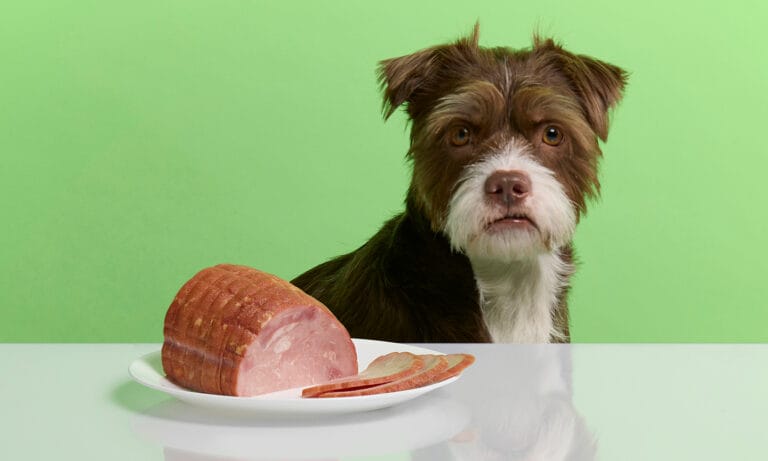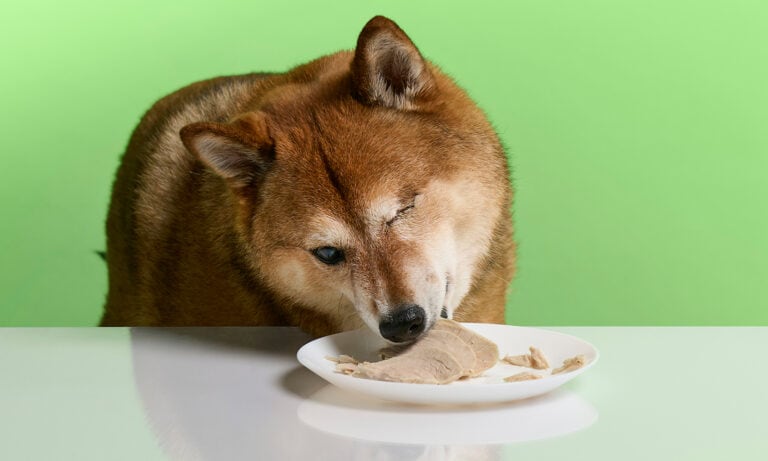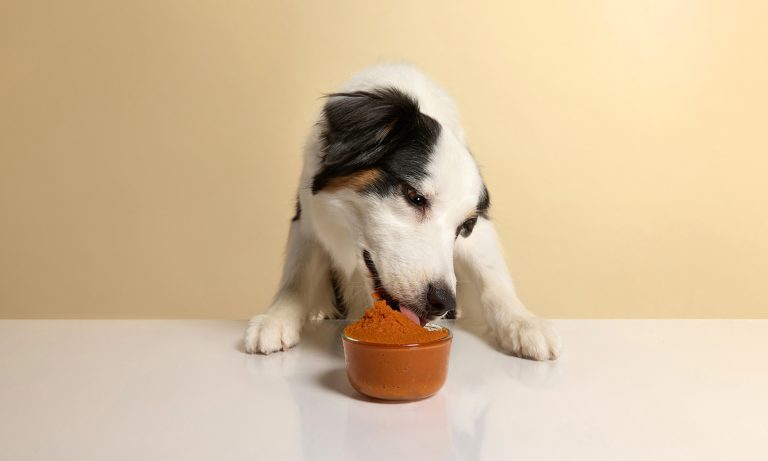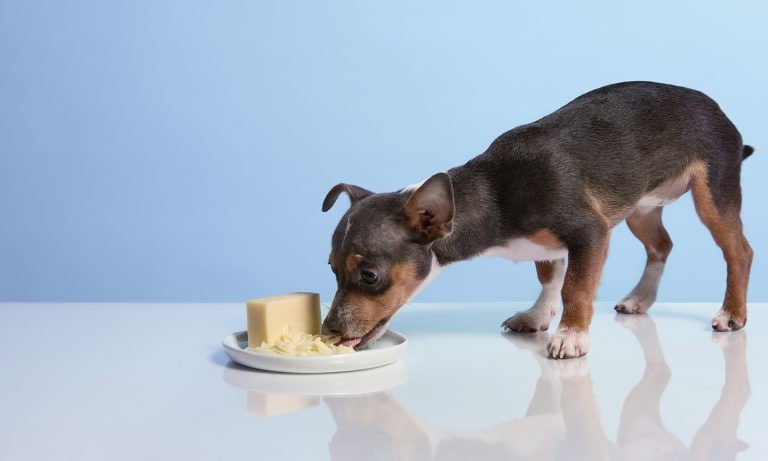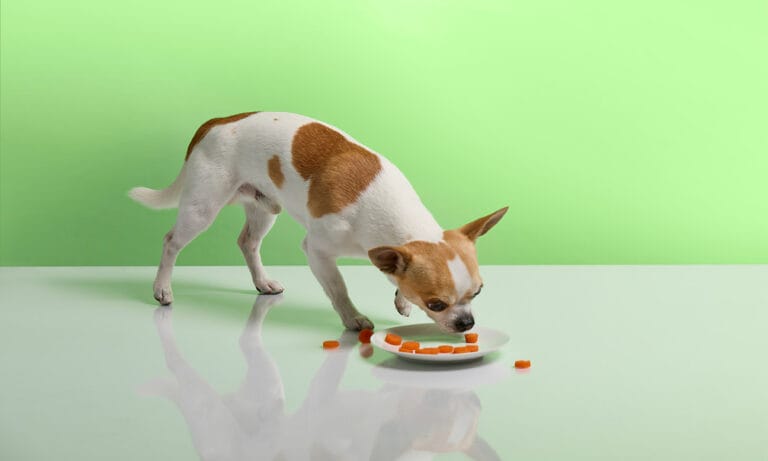With its buttery flavor, a drizzle of olive oil can elevate a humble salad or a piece of baguette to a gourmet masterpiece. But can dogs have olive oil, too?
Yes, this Mediterranean elixir isn’t just fit for humans—dogs can enjoy it, too, in moderation. In fact, adding a little bit of this oil to your dog’s diet could offer your tail-wagging pal some impressive health benefits, such as reduced itching from allergies and a shinier coat.
We spoke to vet experts to press out the details on adding olive oil to your dog’s bowl.
Expert info provided by Dr. Christopher Reeder, DVM, veterinary dermatologist at Lighthouse Veterinary Allergy and Dermatology in Spring Hill, TN; Dr. Judy Morgan, DVM, a holistic veterinarian and author in Zebulon, NC; and Dr. Lisa Fox, DVM, owner of Divergent DVM in Wellington, OH.
Can Dogs Have Olive Oil?
Click to jump to each section.
Is Olive Oil Good for Dogs? 5 Benefits
Olive oil is a natural oil extracted from olives, the fruit of the olive tree. It has long been revered as a superfood for humans, but what benefits can it offer dogs? Let’s take a look.
1. May Improve Skin and Coat Health
Olive oil is rich in nutrients that play a crucial role in maintaining a dog’s skin and fur health. These include vitamin E, omega-3 fatty acids and polyphenols.
Dr. Christopher Reeder, DVM, veterinary dermatologist at Lighthouse Veterinary Allergy and Dermatology in Spring Hill, TN, has seen a noticeable increase in luster and shine in the coats of dogs whose diets were supplemented with olive oil. It takes about 30 days to see a difference, he says.
However, applying olive oil directly to a dog’s coat or skin is not recommended. Most dogs will try to lick off every last drop, which would negate any topical benefits and could cause further skin irritation due to all the licking.
2. May Reduce Itching from Allergies
Many dogs are allergic to substances like pollen, dust and flea saliva. These allergic reactions can make a dog’s skin inflamed and itchy.
Olive oil is primarily made up of a monounsaturated fat called oleic acid. This healthy fat has anti-inflammatory properties that may help ease the itching caused by allergies, says Dr. Reeder.
3. May Support Digestive Health
Due to its natural laxative properties, olive oil, in modest portions, may help dogs struggling with constipation. It’s important to integrate the oil slowly into your dog’s diet and closely monitor their response. If diarrhea, vomiting or other gastrointestinal issues arise, discontinue giving your dog olive oil.
4. May Support Weight Management
The monounsaturated fats in olive oil can help break down the fat inside fat cells. This may help your dog lose weight or reduce the risk of obesity. The key is to find that sweet spot where your dog reaps this benefit without adding too many extra calories to their diet. See below for serving size suggestions.
5. May Enhance Disease Prevention
While not a panacea, olive oil may help your beloved dog stay by your side a bit longer. Antioxidants like vitamin E may help protect dogs’ cells from free radical damage, potentially reducing the risk of diseases like cardiovascular disease and cancer.
Olive oil also contains chemicals that have been shown to help prevent cognitive decline in humans, says Dr. Judy Morgan, DVM, a holistic veterinarian and author in Zebulon, NC.
It’s currently unknown if and how much these benefits apply to dogs, but there’s no harm in adding it to your dog’s diet in moderate amounts, says Dr. Morgan.
Is Olive Oil Bad for Dogs? 3 Risks
While olive oil certainly isn’t bad for dogs when used appropriately, it’s important to note the potential risks associated with its use. According to Dr. Lisa Fox, DVM, owner of Divergent DVM in Wellington, OH, these include:
1. Weight Gain/Obesity
Olive oil is high in calories. Feeding too much to your dog can lead to weight gain and contribute to obesity, which is associated with various health issues like diabetes, joint pain and heart disease. If your dog is already overweight, avoid adding olive oil to their diet.
2. Pancreatitis
Because olive oil is a fat, excessive intake can trigger pancreatitis in dogs. This is a serious and painful condition that occurs when the pancreas becomes inflamed. Signs of pancreatitis in dogs can include abdominal pain, vomiting, diarrhea, lethargy and loss of appetite.
3. Gastrointestinal Upset
Although a small amount of olive oil can help alleviate constipation, too much can cause diarrhea or vomiting. Dogs with a sensitive stomach might not tolerate olive oil well, even in small doses.
Additions to a dog’s regular diet, whether it’s olive oil, dog treats or other dog-safe human foods, should not make up more than 10 percent of your dog’s total daily caloric intake.
What Olive Oil Is Best for Dogs?
When it comes to choosing the right olive oil for your dog, quality matters. Cold-pressed extra virgin olive oil (EVOO) is the best option as it is produced without the use of heat or chemicals, says Dr. Fox.
This type of olive oil retains the highest levels of antioxidants, vitamins and other beneficial compounds. However, EVOO can go rancid faster than others, so it should be stored in a dark-colored bottle away from high heat, Dr. Morgan adds.
How to Safely Serve Dogs Olive Oil
Introducing olive oil to your dog’s diet should be done cautiously and with attention to safety. Here’s how you can do it right:
Consult Your Vet
Before making olive oil a regular part of your dog’s diet, get approval from your veterinarian.
Start Small
How much olive oil can dogs eat? The amount of olive oil your dog can safely consume depends on their size, weight and overall health. As a general guideline, dogs can have 1 teaspoon of olive oil per 20 pounds of body weight daily. So, a 40-pound dog, for example, could have two teaspoons daily.
That said, begin with a small amount of olive oil—even less than the recommended dose for your dog’s size. This can help you monitor your dog’s reaction to the new addition.
Mix It With Food
It’s best to mix the olive oil into your dog’s regular wet or dry food. This prevents them from inhaling it or eating it too quickly, which could lead to choking or an upset stomach. Another option is to feed them commercial dog food that includes olive oil (see next section).
Observe Your Dog
Watch for any signs of digestive system discomfort or allergic reaction after introducing olive oil. If you notice diarrhea, vomiting or lethargy, discontinue use and consult your vet.
Be Consistent
If your vet gives the green light and there are no adverse signs, incorporate olive oil into your dog’s diet consistently to provide ongoing benefits.
Commercial Dog Foods With Olive Oil
Earthborn Holistic Unrefined Smoked Salmon with Ancient Grains & Superfoods Dry Dog Food

- The first ingredient in this dog kibble is real, sustainably sourced salmon that’s free of hormones and antibiotics.
- Contains five ancient grains, including chia, buckwheat and quinoa, which provide fiber and amino acids.
- Contains 18 superfoods like carrots, spinach, blueberries and olive oil, which support digestion, skin and coat health.
Earthborn Holistic K95 Lamb Recipe Grain-Free Canned Dog Food
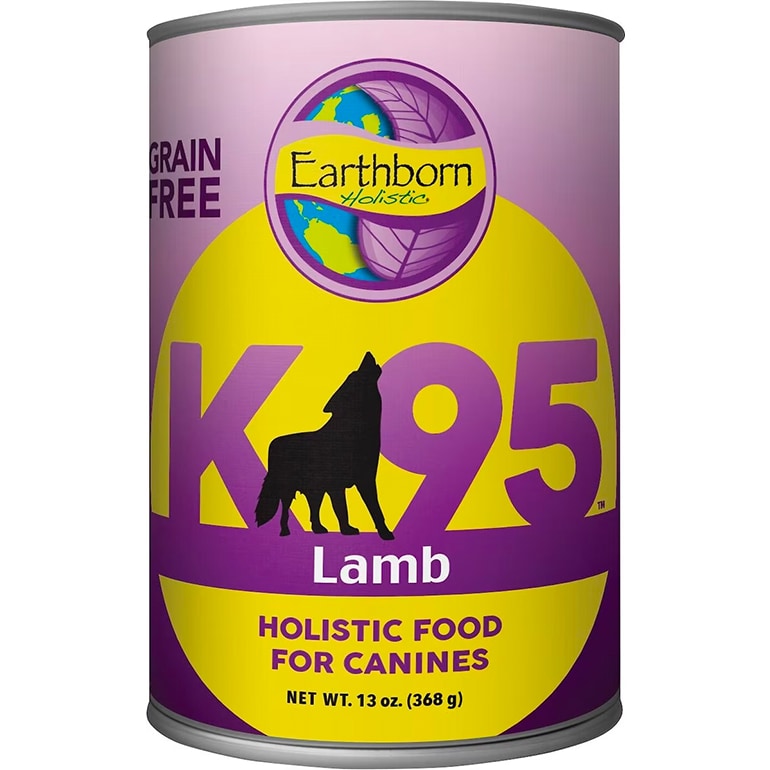
- Contains 95 percent real lamb meat.
- Contains nutrient-rich ingredients, including liver, spinach, olive oil, flaxseed and apples.
- Features a 95 percent grain-free formula, which may be easier for some dogs to digest.
- Provides plentiful protein, essential vitamins and minerals for optimal health.
- The wet formula is a good source of hydration.
Lotus Oven-Baked Small Bites Good Grains Chicken Recipe Dry Dog Food

- Fresh chicken is the first ingredient.
- Low in starch, which supports healthy weight management.
- Kibble is oven-baked to help preserve protein, amino acids, vitamins and antioxidants.
- Includes healthy grains, such as brown rice, barley and oats.
- Contains nutrient-rich ingredients, including spinach, carrots, blueberries, flaxseed and olive oil.
REÁL MESA Mediterranean Chicken & Rice Entrée Dry Dog Food
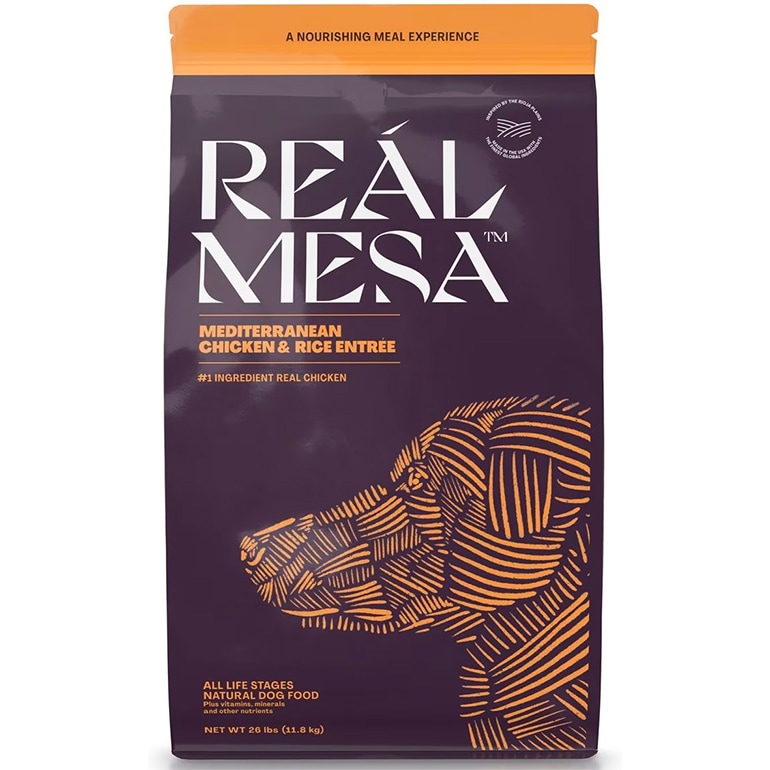
- Real chicken is the No. 1 ingredient.
- Includes omega-3 and 6 fatty acids, which promote a healthy coat and skin.
- Contains nutrient-rich ingredients, including olive oil, kale, flaxseed and artichoke.
- Offers a good dose of natural fiber, which aids in healthy digestion.
- Free from artificial colors, flavors and preservatives.
FAQs About Olive Oil and Dogs
Q:
Can you put olive oil on a dog’s skin?
Q:
Will olive oil help a dog’s dry skin?
Q:
Can you put olive oil on dog food?
Q:
Can I give my dog olive oil every day?
Q:
Can dogs have olive oil in a salad?
Q:
Does olive oil help with a dog’s teeth?
Share:







